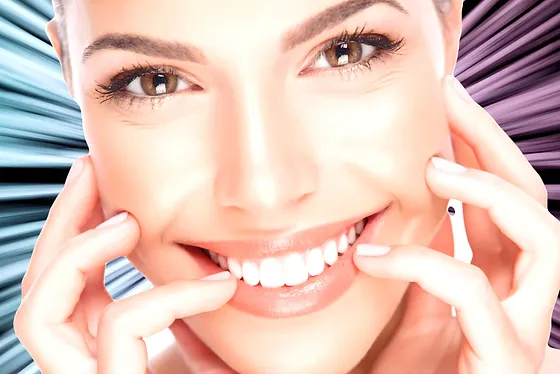The Science Behind Red Light Therapy
Red light therapy, or photobiomodulation, involves exposing the skin to low levels of red and near-infrared light wavelengths. These wavelengths penetrate the skin’s layers, triggering a cellular response that enhances various processes responsible for skin health, including collagen production, cellular regeneration, and inflammation reduction.
The depth to which this penetrates the skin depends on the specific wavelengths used. Longer wavelengths typically provide deeper penetration, allowing for more comprehensive treatment. Devices designed for at-home red light therapy often emit wavelengths within the range of 600-850 nm, targeting various skin concerns effectively.
Growing Popularity in Skincare and Beauty Treatments
From professional in-office treatments to user-friendly at-home devices, it has become increasingly accessible for individuals looking to enhance their skincare routines. Devices like red light therapy wands and red light face wands are widely available, providing users with the option to undergo treatment in the comfort of their homes.
The rise in red light therapy’s popularity can also be attributed to endorsements from celebrities and influencers, who often share their experiences and results on social media. As more people discover the benefits of this innovative treatment, interest in this therapy for wrinkles, fine lines, and other skin concerns continues to grow.
Benefits of Red Light Therapy for Skin Health
This therapy offers a variety of benefits that can help maintain healthy skin, some of the common advantages include:
Stimulating Collagen Production
Collagen, a vital protein in our skin, is responsible for maintaining its elasticity and firmness. As we age, our collagen production naturally decreases, leading to the appearance of wrinkles and fine lines. This can help combat this process by stimulating collagen production, resulting in a more youthful, radiant complexion.
With its potential to boost collagen production, it became a great option for those seeking to reduce the appearance of wrinkles and fine lines. Regular treatment sessions can lead to visible improvements in skin texture and firmness, helping users achieve a more youthful look.
Reducing Inflammation and Redness
In addition to addressing signs of aging, Urdughr red light therapy is also known for its anti-inflammatory properties. By reducing inflammation and redness, it has shown potential for treating acne and rosacea, providing relief to those with sensitive or easily irritated skin.
Red light therapy can be particularly beneficial for individuals with irritated or inflamed skin, as it promotes a calming effect and soothes discomfort. Regular treatments can help to alleviate symptoms and improve overall skin health.
Promoting Cellular Regeneration
By encouraging skin cells to repair and renew themselves more rapidly, this treatment can accelerate the healing process and minimize the appearance of scars and blemishes. Through the promotion of cellular regeneration, it can help to improve the appearance of scars, blemishes, and other skin imperfections. By supporting skin repair, red light therapy can contribute to a smoother, more even complexion over time.
Improving Skin Tone and Texture
By stimulating the production of new skin cells, this treatment can promote a more uniform complexion and reduce the appearance of dark spots and discoloration. As mentioned earlier, red light therapy for fine lines and wrinkles can yield impressive results. By targeting these common signs of aging, regular treatment sessions can help to smooth out the skin’s surface, leading to a more refined and youthful appearance.
Incorporating Red Light Therapy into Your Skincare Routine
Selecting the Appropriate Treatment Device
When considering at-home red light therapy, it’s essential to understand the device’s specifications, including wavelength range, power output, and treatment area. These factors can impact the effectiveness of the treatment and help you select the best option for your individual needs.
There are various types of devices available for at-home light therapy, including handheld wands, tabletop units, and larger panel systems. Consider the pros and cons of each type of device, such as ease of use, portability, treatment area, and cost, before making your decision.
Determining Optimal Treatment Duration and Frequency
The ideal duration and frequency of red light therapy sessions may vary depending on individual needs and skin type. However, general guidelines suggest starting with sessions of 10-20 minutes, 3-5 times per week. Over time, you can adjust the regimen to suit your specific needs and desired results.
It’s important to remember that everyone’s skin is different, and what works for one person may not work for another. Monitor your progress and listen to your skin, adjusting the duration and frequency of your red light therapy sessions as needed to achieve optimal results.
Combining Red Light Therapy with Other Skincare Practices
Maintaining a balanced diet and healthy lifestyle can play a crucial role in supporting overall skin health. Ensure you’re consuming a nutrient-rich diet, staying hydrated, and getting enough sleep to help your skin look and feel its best.
To maximize the benefits of red light therapy, consider incorporating complementary treatments and skincare products into your routine. This may include exfoliating treatments, hydrating serums, or antioxidant-rich creams. By combining this with a well-rounded skincare regimen, you can achieve even more impressive results.
With its numerous benefits, this has emerged as a powerful tool for enhancing skin vitality. From reducing the appearance of wrinkles and fine lines to soothing inflammation and promoting cellular regeneration, this innovative treatment offers a wealth of potential for individuals looking to improve their skin health.

